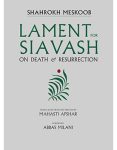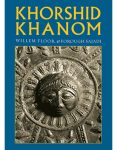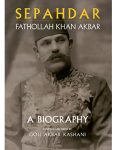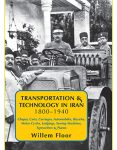About the Book
Throughout history, many an ambitious diplomatic initiative has slipped into obscurity, but few have been so thoroughly forgotten as the efforts of a young man named Pedros Bedik to foster an alliance between two great seventeenth century powers, Persia and the Holy Roman Empire, against the mighty Ottoman Empire that lay between them. As a related enterprise, he worked to end the separation between the Western and Eastern versions of Christianity. In 1678, he published a book—written in Latin, with a Persian introduction—intended to explain the East to the West and thus further those aims. Never reprinted or translated, it has remained virtually unknown until now.
Bedik was raised in an Armenian, Christian community in Ottoman-ruled Aleppo. At the age of 16, he was sent to Rome by his mother to avoid forced conversion to Islam. For seven years he attended a missionary college there, but his theological education abruptly ended in 1668 when he was expelled for carousing. Soon after, he left Rome in the company of the archbishop of Nakhchivan, in present-day Azerbaijan. En route the two agreed to launch a project to unite the Armenian Church with that of Rome. Bedik wanted to use this plan as leverage to get European Roman Catholic support for the protection of Armenian Christians.
From Armenia Bedik travelled to Iran and spent 5 years there. In his book, which is mostly about his time in there, he is aggressively Christian and scathing about Islam, but not about Iran and Iranians. And he goes to great pains to show that the Shah was more than willing to enter into a pact with the Pope and the Christian princes of Europe to jointly attack the Turks from all sides.
The value of this long-forgotten book lies in Bedik’s talents as a knowledgeable, linguistically-skilled and keen-eyed observer, although a highly partisan one. Its pages contain fascinating descriptions of the court, customs, and people of Iran, including such unique information as the ash-e su memorial banquet ceremony; the abbasiyaneh drinking custom; how Persians threw a party and their cooking; the Nowruz ceremonies; the various breeds of horses; the race of messengers, and the Caspian Kalmyk nomadic tribe’s annual oath to the Russian tsar.
Bedik eventually returned to Europe, entered the Holy Roman Emperor’s service as diplomat and soldier, and was made a count. In 1683, he was appointed ambassador and sent to Iran to discuss joint military action against the Ottomans and to seek better treatment for Iran’s Christians. En route, after discussions in Warsaw, he disappeared in Russia. In this book, his vital and adventurous spirit lives again.
About the Author
Colette Ouahes lives in Bethesda, Maryland where she taught Latin and Classical Greek at the French School until her retirement.
Willem Floor studied development economics and non-western sociology, as well as Persian, Arabic and Islamology from 1963-67 at the University of Utrecht (the Netherlands). He received his doctoral degree from the University of Leiden in 1971. Since 1983, Dr. Floor has been employed by the World Bank as an energy specialist. Throughout this time, he has published extensively on the socio-economic history of Iran. His books include: Public Health in Qajar Iran, Agriculture in Qajar Iran, and The History of Theater in Iran, as well as, The Persian Gulf: A Political and Economic History of 5 Port Cities, 1500-1730, its second volume, Persian Gulf: The Rise of the Gulf Arabs, 1747-1792, third volume, The Rise and Fall of Bandar-e Lengeh, the fourth volume, Bandar Abbas: The Natural Gateway of Southeast Iran, and the fifth volume, The Persian Gulf: Links with the Hinterland Bushehr, Borazjan, Kazerun, Banu Ka’b, & Bandar Abbas. He has also published, Travels Through Northern Persia, 1770-1774, Titles and Emoluments in Safavid Iran, and A Social History of Sexual Relations in Iran; Labor and Industry in Iran, 1850-1941; Guilds, Merchants and Ulama in 19th Century Iran; The Rise and Fall of Nader Shah; Games Persians Play. His translations include: Samuel Gottlieb Gmelin’s Travels Through Northern Persia 1770–1774 , and with Hasan Javadi, Abbas Qoli Aqa Bakikhanov’s The Heavenly Rose-Garden: A History of Shirvan & Daghestan; Evliya Chelebi’s Travels in Iran and the Caucasus, 1647 and 1654; A Man of Two Worlds: Pedros Bedik in Iran, 1670–1675, The Persian Gulf: The Hula Arabs of The Shibkuh Coast of Iran, and The Persian Gulf: Dutch-Omani Relations A Commercial & Political History 1651-1806.








